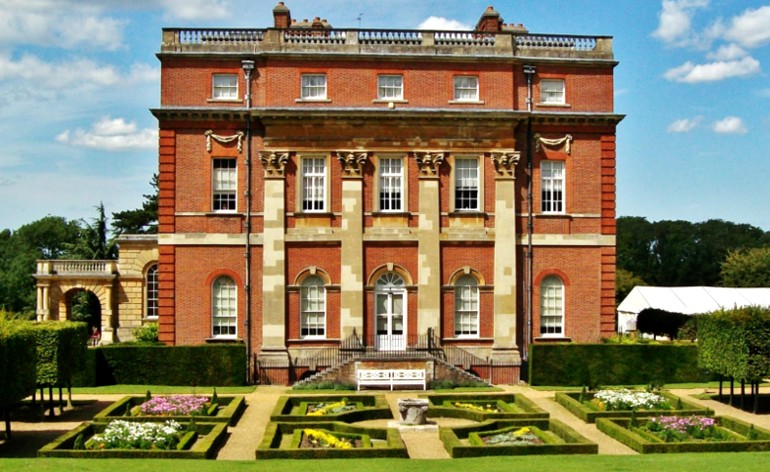Clandon Park is a spectacular 18th century Palladian mansion with extensive grounds at the foot of the Surrey Hills in West Clandon, just outside of Guildford. It has been a National Trust property since 1956 and its main attractions include the grand marble hall containing chimney pieces by English sculptor Michael Rysbrack, the porcelain collection and the unique Maori meeting house. It now hosts private functions and weddings as well as public events on a regular basis, transporting guests into a world of tranquillity and luxury.
Sir Richard Onslow (the ‘Red Fox of Surrey’), who spent many years as MP for Guildford and Chancellor of the Exchequer, acquired the Clandon Park estate in 1641. He was responsible for laying out huge formal gardens with beautiful parterres, pools, fountains and avenues. However, it was his great-grandson, Thomas, the second Lord Onslow (born in 1679) that was responsible for rebuilding Clandon as a fashionable Palladian mansion, as the house we see today.
Still, not all of the Onslow’s had such affection for Clandon Park. When Thomas’ son Arthur inherited the house and grounds in 1827, he simply ordered it to be shut up and allowed the estate to fall into disrepair, which is how it remained until 1870 when William Hillier Onslow, aged just 17 found himself the 4th Earl of Onslow and owner of Clandon Park. William sold land to pay for repairs, redecoration and improvements and even bought back some of the family heirlooms at auction.
William also spent four years in New Zealand where he held the title of ‘Governor General’. This is significant because on his return, he also brought a Māori meeting house named Hinemihi back with him, which can still be found in the gardens. This was originally situated near Lake Tarawera on the North Island and provided shelter to the people of Te Wairoa village during the eruption of Mount Tarawera in 1886. The building was covered in ash and surrounded by volcanic debris, but its occupants survived. It remained half buried until 1892 when Lord Onslow had it removed and shipped to Clandon Park. During the 2012 London Olympics, the New Zealand Olympic team visited Hinemihi to pay homage.
Richard, the 5th Earl of Onslow, continued the improvements to the house, but in 1914 war broke out. In World War I, the house was offered as a hospital for injured troops and similarly when World War II arrived, the Onslows moved out and the house was used by the Public Records Office. By the mid-20th century, the house was beginning to suffer due to lack of investment and during post war austerity it was almost impossible to keep a large country house afloat.
Nevertheless, Lady Iveagh, the 6th Earl of Onslow’s Aunt, bought Clandon Park from her nephew and in 1956 gave it to the National Trust, saying at the time, “It is with the deepest satisfaction that I can now feel that my old home is safe for the future.”
Since being presented to the National Trust in 1956, the house has been extensively restored and refurbished under the guidance of John Fowler. The house now contains the fine collection of 18th-century furniture and porcelain acquired by the remarkable connoisseur Hannah Gubbay, as well as the Ivo Forde Meissen collection of Italian comedy figures and Mortlake tapestries and other textiles and carpets. The building also houses the Queen’s Royal Surrey Regiment Museum.
While the wider parkland is still in the hands of the Onslow family, you can still see seven acres of gardens that surround the house. These are home to a small parterre garden, Hinemihi (the Māori meeting house) and the walled Dutch Garden.
James Martin
Images sourced from: http://tinyurl.com/mhfv6sb



